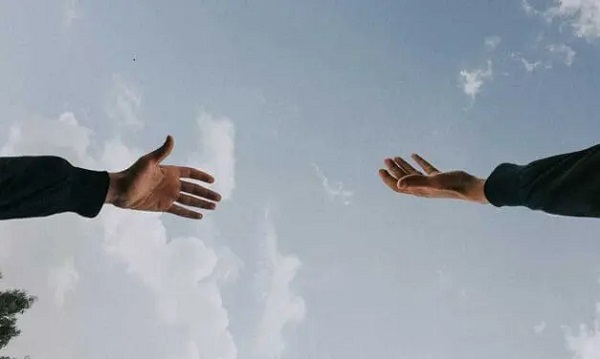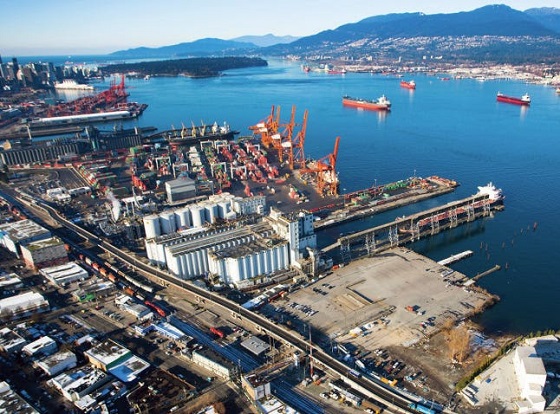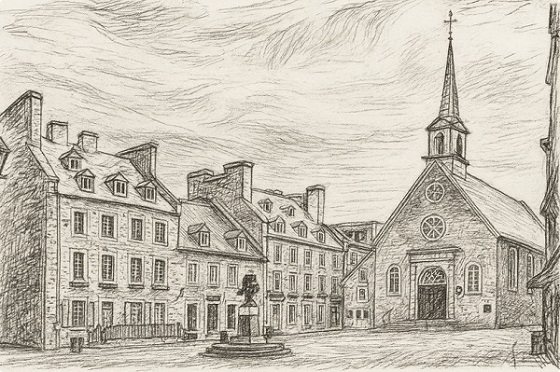Addictions
No, drug prohibition is not ‘white supremacy’

From Break The Needle
British Columbia’s top doctor released a report arguing that the legalization of all drugs combats “racism” and “colonialism.” That’s historically illiterate.
The notion that drug prohibition is inherently racist has become exceedingly popular within the harm reduction world and, by extension, inside many public health institutions and graduate programs. Yet anyone with even a cursory knowledge of history can see that this is absurd. Societies from all across the world have long understood the dangers of addictive substances and supported efforts to criminalize them—so why is this being ignored?
Though the “prohibition is racist” movement usually flies under the public’s radar, it was thrust into the limelight earlier this month when B.C.’s top doctor, Bonnie Henry, released a report calling for the legalization of all drugs. Not only did Henry recommend that dangerous substances—including meth, cocaine and fentanyl—be sold in stores much like alcohol and cannabis, her team asserted that prohibitionist policies are “based on a history of racism, white supremacy, paternalism, colonialism, classism and human rights violations.”
One would hope such sweeping declarations would have been backed with fulsome arguments and historical references, but that didn’t happen here.
Instead, the report simply emphasized how Canada’s original drug laws, dating back to the late 19th and early 20th centuries, were motivated by racist animus against Chinese immigrants. As opium was popular among these immigrants, the drug was believed to pose a special moral threat to white society and was among the first substances to be harshly policed. This, in turn, gave the state a new legal tool to harass Chinese Canadians and, in some cases, deport them.
After briefly explaining this point, Henry’s report concluded that, “Over time, the moral panic associated with drug use expanded to target many more groups of people, including Indigenous people, Black people, women, people of colour, and people of lower socioeconomic status.” This extrapolation was presented as a self-evident fact, without any evidence or citations to explain or substantiate it.
Henry’s recommendations were immediately rejected by the provincial government and savagely ridiculed in the media. Yet the views articulated in her report, shocking as they may have been to many, were not actually exceptional. They only rehashed the dominant beliefs of the harm reduction world—beliefs have also, over the past decade or so, permeated deeply into Canada’s public health bureaucracies.
Henry’s report may be dead in the water, but the underlying ideas which animated it are still very much alive and will, in all likelihood, continue to influence Canadian policymakers within the cloistered hallways of the civil service. This is a shame, because it is difficult to overstate how strange these kinds of beliefs are.
To argue that drug prohibition is broadly based on a history of racism, mostly because it was misused for racist purposes a century ago, is kindergarten-level reasoning. There are ample examples of non-European societies, past and present, embracing criminalization. This is glaringly obvious and, in many cases, common knowledge.
Subscribe for free to get our latest news and analysis – or donate to our investigative journalism fund.
Non-Western drug prohibition throughout the ages
Perhaps one of the greatest examples of non-European drug prohibition is Sharia law, which has banned the consumption of mind-altering substances since the 7th century. One wonders how harm reduction activists can claim, with a straight face, that prohibition is rooted in “colonialism” and “white supremacy” when Islam’s religious and legal texts supported it centuries before global European empires emerged.
Since harm reduction scholars are so concerned about Chinese experiences, it would be instructive to look toward China itself, where prohibition is also popular.
In the late 18th century, the British began exporting large quantities of opium to the Qing Empire (China), which quickly fomented a wave of addiction and social disorder. Soon after, Qing officials embarked on a multi-decade campaign to criminalize the drug. “Opium is a poison, undermining our good customs and morality. Its use is prohibited by law,” wrote the Daoguang Emperor in an edict issued in 1810.
By the mid-19th century, the Qing worried that, without drastic action, China would be left bereft of money and productive men—so they banned all sales of opium and destroyed any supply of it they could find, including European wares. This angered the British, who profited handsomely off the opium trade, and led them to victoriously wage war against the Qing—not once, but twice—to forcibly stop prohibition.
Narcotics thus continued to flow through the veins of China’s body politic, wreaking havoc for generations. Since then, Chinese nationalists have bitterly remembered the Opium Wars as a colonial crime which marked the beginning of China’s “century of humiliation.”
 |
The 98th Regiment of Foot at the attack on Chin-Kiang-Foo (Zhenjiang), 21 July 1842, resulting in the defeat of the Manchu government. Watercolour by military illustrator Richard Simkin (1840–1926).
This raises an important question: how exactly can anyone square this history with the ideological framework of the harm reduction movement? Were the Qing embodying some mystical form of white supremacy? Perhaps we should be grateful that the British sent their anti-racist warships to decolonize China’s drug laws.
Even today, the legacy of the Opium Wars continues to inform Chinese attitudes towards drugs—both within China itself (where strict prohibitionism is the norm) and in the diaspora.
In San Francisco, America’s petri dish for drug liberalization, it is Chinese-Americans who are leading a public backlash against progressive policies and calling for greater prohibition. Similarly, Chinese-Canadians were instrumental to Vancouver’s political pivot during the 2022 municipal elections, wherein the centrist ABC party swept the city council and the mayor’s office. Just this spring, Chinese-Canadian protestors in Richmond, the most ethnically Chinese city in North America , thwarted the launch of a new supervised consumption site, only to have a white progressive woman shout “Go back to Hong Kong” at them. No doubt another anti-racist activist.
When I interviewed almost a dozen Chinese-Canadian small business owners and workers in Vancouver’s historical Chinatown last summer, their support for prohibition was clear—and the legacy of the Opium Wars was invoked several times. Many other ethnic groups are processing similar historical traumas, and facing similar erasure. Do harm reduction activists forget, for example, that early European colonists devastated North American Indigenous communities by plying them with alcohol?
Indigenous leaders did not respond to that crisis by calling for more booze. On the contrary, they pushed for prohibition. Illustratively, when Treaties No. 6 and 7 were negotiated during the 1870s, Indigenous representatives asked for the “exclusion of fire water” from Saskatchewan, and that “no intoxicating liquor be allowed to be introduced or sold” on reserves. Even today, dozens of “dry” Indigenous reserves throughout Canada continue to ban alcohol and drugs to whatever extent they can.
When I interviewed over a dozen Indigenous elders and community members in Calgary last summer, their opposition to drug liberalization was clear—some went so far as to condemn decriminalization and “safer supply” programs as “pharmaceutical colonialism.” Ronnie Chickite, chief of the We Wai Kai Nation in British Columbia, told me this spring that his entire band council was “entirely against” decriminalization and that provincial officials had allegedly ignored them.
Building upon these interviews, two senior contacts in the Ontario government confirmed to me earlier this year that Indigenous leaders across the province seem to commonly hold prohibitionist beliefs. Who would have thought that Indigenous people could be such raging white supremacists?
Surveying the world today, it is clear that drug prohibition is actually strongest in non-European states—particularly East Asian and Middle Eastern ones—while liberalization is actually more popular in the West. It is telling that the harm reduction movement seems intent on ignoring this, or, alternatively, positioning non-white prohibitionism as a symptom of corrupting European influences. Both responses are, ironically, more than a little racist—how else can one describe the systematic erasure of non-European voices?
How is it that harm reduction advocates, who make such a theatre of their own “anti-racism,” cannot grasp that non-white communities have intellectual and cultural agency and do not simply let white people dictate their beliefs? In their obsessive disdain for European civilization, these advocates close their eyes to the rest of the world and inadvertently reproduce the same cultural narcissism that they ostensibly condemn—their calls for racial justice conceal a Eurocentric mindset sopping with paternalism.
How is this possible? How has this happened? A glimpse of an answer can be found in the “Acknowledgements” section of Henry’s report this month, where brief biographies of the report’s contributors were provided. Each contributor fixated on their ethnicity and, in many cases, proclaimed themselves as “third generation settlers” or “occupiers.” Unsurprisingly, almost everyone on the team was white. Though there were some Indigenous voices (who were seemingly relegated to working on exclusively Indigenous-related tasks, of course), not a single Asian, black or Middle-Eastern voice could be found.
The B.C. provincial health officer report’s contributors section:
So it seems that a bunch of white progressive bureaucrats produced a document that fixated on “colonialism” and “racism” while ignoring the actual beliefs of many, if not most, non-white communities. Nothing could encapsulate the harm reduction zeitgeist more perfectly: the privileging of empty gestures over real consultation, the self-indulgent self-flagellation of the white bourgeoisie, the patronizing assumption that minority communities have homogenous political beliefs that happen to align with progressive causes.
All of this would be comedic if lives weren’t at stake.
It should be clarified that there are many valid ways to criticize drug laws from a racial justice lens. Laws are just tools which we use to order society, and, like any tool, they can be abused—so it is fair to explore how some laws, in some contexts, have racist intentions or outcomes.
This is best illustrated by the wealth of scholarship criticizing American cannabis laws—in this case, critics have been able to concretely show that specific laws, in specific contexts, are being enforced unfairly and exacerbating inequities without producing justificatory social benefits.
Yet this mode of analysis, which focuses heavily on outcomes and concrete data, is an entirely different beast from the essentialist arguments recklessly flung around by the harm reduction movement. It makes sense to test measurable hypotheses about specific laws and their implementations. But to argue that drug prohibition is intrinsically “racist” is to succumb to ideological hallucination.
This essay originally appeared in The Hub and has been syndicated to Break The Needle through a co-publishing agreement.
Our content is always free – but if you want to help us commission more high-quality journalism, consider getting a voluntary paid subscription.
Addictions
The Shaky Science Behind Harm Reduction and Pediatric Gender Medicine


By Adam Zivo
Both are shaped by radical LGBTQ activism and questionable evidence.
Over the past decade, North America embraced two disastrous public health movements: pediatric gender medicine and “harm reduction” for drug use. Though seemingly unrelated, these movements are actually ideological siblings. Both were profoundly shaped by extremist LGBTQ activism, and both have produced grievous harms by prioritizing ideology over high-quality scientific evidence.
While harm reductionists are known today for championing interventions that supposedly minimize the negative effects of drug consumption, their movement has always been connected to radical “queer” activism. This alliance began during the 1980s AIDS crisis, when some LGBTQ activists, hoping to reduce HIV infections, partnered with addicts and drug-reform advocates to run underground needle exchanges.
The Bureau is a reader-supported publication.
To receive new posts and support my work, consider becoming a free or paid subscriber.
In the early 2000s, after the North American AIDS epidemic was brought under control, many HIV organizations maintained their relevance (and funding) by pivoting to addiction issues. Despite having no background in addiction medicine, their experience with drug users in the context of infectious diseases helped them position themselves as domain experts.
These organizations tended to conceptualize addiction as an incurable infection—akin to AIDS or Hepatitis C—and as a permanent disability. They were heavily staffed by progressives who, influenced by radical theory, saw addicts as a persecuted minority group. According to them, drug use itself was not the real problem—only society’s “moralizing” norms.
These factors drove many HIV organizations to lobby aggressively for harm reduction at the expense of recovery-oriented care. Their efforts proved highly successful in Canada, where I am based, as HIV researchers were a driving force behind the implementation of supervised consumption sites and “safer supply” (free, government-supplied recreational drugs for addicts).
From the 2010s onward, the association between harm reductionism and queer radicalism only strengthened, thanks to the popularization of “intersectional” social justice activism that emphasized overlapping forms of societal oppression. Progressive advocates demanded that “marginalized” groups, including drug addicts and the LGBTQ community, show enthusiastic solidarity with one another.
These two activist camps sometimes worked on the same issues. For example, the gay community is struggling with a silent epidemic of “chemsex” (a dangerous combination of drugs and anonymous sex), which harm reductionists and queer theorists collaboratively whitewash as a “life-affirming cultural practice” that fosters “belonging.”
For the most part, though, the alliance has been characterized by shared tones and tactics—and bad epistemology. Both groups deploy politicized, low-quality research produced by ideologically driven activist-researchers. The “evidence-base” for pediatric gender medicine, for example, consists of a large number of methodologically weak studies. These often use small, non-representative samples to justify specious claims about positive outcomes. Similarly, harm reduction researchers regularly conduct semi-structured interviews with small groups of drug users. Ignoring obvious limitations, they treat this testimony as objective evidence that pro-drug policies work or are desirable.
Gender clinicians and harm reductionists are also averse to politically inconvenient data. Gender clinicians have failed to track long-term patient outcomes for medically transitioned children. In some cases, they have shunned detransitioners and excluded them from their research. Harm reductionists have conspicuously ignored the input of former addicts, who generally oppose laissez-faire drug policies, and of non-addict community members who live near harm-reduction sites.
Both fields have inflated the benefits of their interventions while concealing grievous harms. Many vulnerable children, whose gender dysphoria otherwise might have resolved naturally, were chemically castrated and given unnecessary surgeries. In parallel, supervised consumption sites and “safer supply” entrenched addiction, normalized public drug use, flooded communities with opioids, and worsened public disorder—all without saving lives.
In both domains, some experts warned about poor research practices and unmeasured harms but were silenced by activists and ideologically captured institutions. In 2015, one of Canada’s leading sexologists, Kenneth Zucker, was fired from the gender clinic he had led for decades because he opposed automatically affirming young trans-identifying patients. Analogously, dozens of Canadian health-care professionals have told me that they feared publicly criticizing aspects of the harm-reduction movement. They thought doing so could invite activist harassment while jeopardizing their jobs and grants.
By bullying critics into silence, radical activists manufactured false consensus around their projects. The harm reductionists insist, against the evidence, that safer supply saves lives. Their idea of “evidence-based policymaking” amounts to giving addicts whatever they ask for. “The science is settled!” shout the supporters of pediatric gender medicine, though several systematic reviews proved it was not.
Both movements have faced a backlash in recent years. Jurisdictions throughout the world are, thankfully, curtailing irreversible medical procedures for gender-confused youth and shifting toward a psychotherapy-based “wait and see” approach. Drug decriminalization and safer supply are mostly dead in North America and have been increasingly disavowed by once-supportive political leaders.
Harm reductionists and queer activists are trying to salvage their broken experiments, occasionally by drawing explicit parallels between their twin movements. A 2025 paper published in the International Journal of Drug Policy, for example, asserts that “efforts to control, repress, and punish drug use and queer and trans existence are rising as right-wing extremism becomes increasingly mainstream.” As such, there is an urgent need to “cultivate shared solidarity and action . . . whether by attending protests, contacting elected officials, or vocally defending these groups in hostile spaces.”
How should critics respond? They should agree with their opponents that these two radical movements are linked—and emphasize that this is, in fact, a bad thing. Large swathes of the public understand that chemically and surgically altering vulnerable children is harmful, and that addicts shouldn’t be allowed to commandeer public spaces. Helping more people grasp why these phenomena arose concurrently could help consolidate public support for reform and facilitate a return to more restrained policies.
Adam Zivo is director of the Canadian Centre for Responsible Drug Policy.
For the full experience, please upgrade your subscription and support a public interest startup.
We break international stories and this requires elite expertise, time and legal costs.
Addictions
BC premier admits decriminalizing drugs was ‘not the right policy’

From LifeSiteNews
Premier David Eby acknowledged that British Columbia’s liberal policy on hard drugs ‘became was a permissive structure that … resulted in really unhappy consequences.’
The Premier of Canada’s most drug-permissive province admitted that allowing the decriminalization of hard drugs in British Columbia via a federal pilot program was a mistake.
Speaking at a luncheon organized by the Urban Development Institute last week in Vancouver, British Columbia, Premier David Eby said, “I was wrong … it was not the right policy.”
Eby said that allowing hard drug users not to be fined for possession was “not the right policy.
“What it became was a permissive structure that … resulted in really unhappy consequences,” he noted, as captured by Western Standard’s Jarryd Jäger.
LifeSiteNews reported that the British Columbia government decided to stop a so-called “safe supply” free drug program in light of a report revealing many of the hard drugs distributed via pharmacies were resold on the black market.
Last year, the Liberal government was forced to end a three-year drug decriminalizing experiment, the brainchild of former Prime Minister Justin Trudeau’s government, in British Columbia that allowed people to have small amounts of cocaine and other hard drugs. However, public complaints about social disorder went through the roof during the experiment.
This is not the first time that Eby has admitted he was wrong.
Trudeau’s loose drug initiatives were deemed such a disaster in British Columbia that Eby’s government asked Trudeau to re-criminalize narcotic use in public spaces, a request that was granted.
Records show that the Liberal government has spent approximately $820 million from 2017 to 2022 on its Canadian Drugs and Substances Strategy. However, even Canada’s own Department of Health in a 2023 report admitted that the Liberals’ drug program only had “minimal” results.
Official figures show that overdoses went up during the decriminalization trial, with 3,313 deaths over 15 months, compared with 2,843 in the same time frame before drugs were temporarily legalized.
-

 Alberta6 hours ago
Alberta6 hours agoFrom Underdog to Top Broodmare
-

 International17 hours ago
International17 hours agoPrince Andrew banished from the British monarchy
-

 Alberta2 days ago
Alberta2 days agoNobel Prize nods to Alberta innovation in carbon capture
-

 Business1 day ago
Business1 day agoCanada’s attack on religious charities makes no fiscal sense
-

 Business16 hours ago
Business16 hours ago“We have a deal”: Trump, Xi strike breakthrough on trade and fentanyl
-

 Bruce Dowbiggin1 day ago
Bruce Dowbiggin1 day agoGet Ready: Your House May Not Be Yours Much Longer
-

 Crime16 hours ago
Crime16 hours agoCanada Seizes 4,300 Litres of Chinese Drug Precursors Amid Trump’s Tariff Pressure Over Fentanyl Flows
-

 National2 days ago
National2 days agoCanadian MPs order ethics investigation into Mark Carney’s corporate interests










